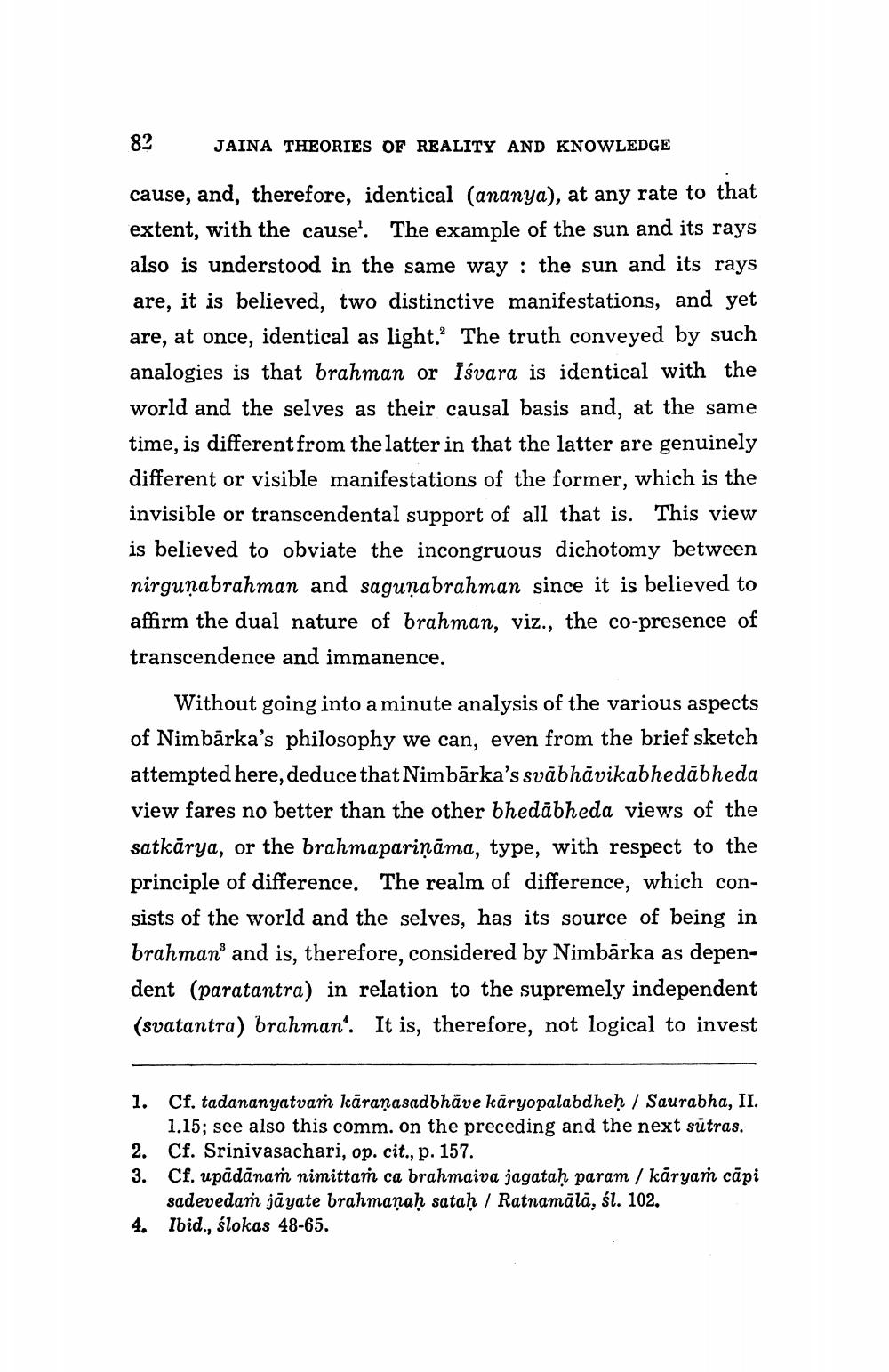________________
82
JAINA THEORIES OF REALITY AND KNOWLEDGE
cause, and, therefore, identical (ananya), at any rate to that extent, with the cause'. The example of the sun and its rays also is understood in the same way the sun and its rays are, it is believed, two distinctive manifestations, and yet are, at once, identical as light. The truth conveyed by such analogies is that brahman or Isvara is identical with the world and the selves as their causal basis and, at the same time, is different from the latter in that the latter are genuinely different or visible manifestations of the former, which is the invisible or transcendental support of all that is. This view is believed to obviate the incongruous dichotomy between nirgunabrahman and sagunabrahman since it is believed to affirm the dual nature of brahman, viz., the co-presence of transcendence and immanence.
Without going into a minute analysis of the various aspects of Nimbārka's philosophy we can, even from the brief sketch attempted here, deduce that Nimbarka's svābhävikabhedabheda view fares no better than the other bhedabheda views of the satkārya, or the brahmaparināma, type, with respect to the principle of difference. The realm of difference, which consists of the world and the selves, has its source of being in brahman and is, therefore, considered by Nimbārka as dependent (paratantra) in relation to the supremely independent (svatantra) brahman'. It is, therefore, not logical to invest
1. Cf. tadananyatvaṁ kāraṇasadbhave karyopalabdheḥ / Saurabha, II. 1.15; see also this comm. on the preceding and the next sutras. 2. Cf. Srinivasachari, op. cit., p. 157.
3. Cf. upādānam nimittam ca brahmaiva jagataḥ param / karyaṁ cāpi sadevedam jāyate brahmanaḥ sataḥ / Ratnamālā, śl. 102.
4. Ibid., slokas 48-65.




